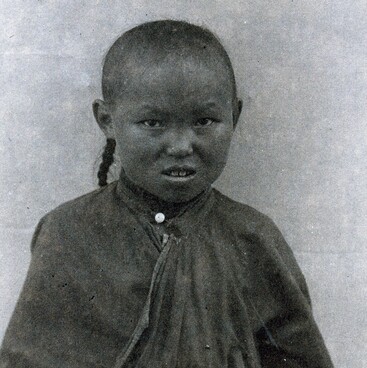The traditional occupation of the Khakasses was semi-nomadic livestock farming. Livestock farming in the Middle Yenisey valley began as early as the Middle Ages, and the Khakass-Minusinsk Basin was one of the oldest grazing centers of Siberia.
The Khakasses bred mainly horses, sheep, and cattle. Horses were used for migrations, for carrying loads, and horse meat and milk were used as food.
The main breed of horses was the steppe horse (‘Kirghiz’). Herds grazed in the mountains and steppe all year round. The animals were divided into flocks, with one flock having about 20–30 horses with foals and being guarded by a stallion. In winter, the herds were taken for shelter to mountains, where there was little snow.
Since the 17th and 18th centuries, the Khakasses were engaged in artistic forging and jewelry making. They made harnesses for horses from iron and silver.
The museum collection houses a saddle with stirrups made in the 19th century. However, the archaeological sites of the Middle Yenisey still reveal wooden and metal parts of even earlier saddles.
The base for them was made of wood. It consisted of two rectangular shelves and two arcs that connected them. The parts were fastened to each other with leather straps.
The saddle frame was covered with soft material (such as felt) and leather. Sometimes a section of wood could be left uncovered.
To make the saddle more functional, various holes for supports and rings were made in the rigid frame to carry goods or fasten the straps that pulled loads.
Among nomads, it was customary to decorate pommels with overlays, which were carved from bone or metal. A saddle was attached to a horse using straps: a breast strap (koksi paa) and an under-tail strap (khoskhyn). In addition, the entire saddle, together with saddle blanket (uchurgu) and saddlecloth, which was placed over the saddle blanket for decoration — cheprak (kichim) — was tied with a special girth (‘hollag’).
In the shelves of the saddle, special holes were cut through for a strap that connected the stirrups. The length of that strap was regulated by knots or buckles.
The saddle and stirrups were an important part of the horse’s equipment, though not indispensable. Despite their practicality and convenience for the rider, the unwealthy nomads did very well without them in peaceful life.
The Khakasses bred mainly horses, sheep, and cattle. Horses were used for migrations, for carrying loads, and horse meat and milk were used as food.
The main breed of horses was the steppe horse (‘Kirghiz’). Herds grazed in the mountains and steppe all year round. The animals were divided into flocks, with one flock having about 20–30 horses with foals and being guarded by a stallion. In winter, the herds were taken for shelter to mountains, where there was little snow.
Since the 17th and 18th centuries, the Khakasses were engaged in artistic forging and jewelry making. They made harnesses for horses from iron and silver.
The museum collection houses a saddle with stirrups made in the 19th century. However, the archaeological sites of the Middle Yenisey still reveal wooden and metal parts of even earlier saddles.
The base for them was made of wood. It consisted of two rectangular shelves and two arcs that connected them. The parts were fastened to each other with leather straps.
The saddle frame was covered with soft material (such as felt) and leather. Sometimes a section of wood could be left uncovered.
To make the saddle more functional, various holes for supports and rings were made in the rigid frame to carry goods or fasten the straps that pulled loads.
Among nomads, it was customary to decorate pommels with overlays, which were carved from bone or metal. A saddle was attached to a horse using straps: a breast strap (koksi paa) and an under-tail strap (khoskhyn). In addition, the entire saddle, together with saddle blanket (uchurgu) and saddlecloth, which was placed over the saddle blanket for decoration — cheprak (kichim) — was tied with a special girth (‘hollag’).
In the shelves of the saddle, special holes were cut through for a strap that connected the stirrups. The length of that strap was regulated by knots or buckles.
The saddle and stirrups were an important part of the horse’s equipment, though not indispensable. Despite their practicality and convenience for the rider, the unwealthy nomads did very well without them in peaceful life.



